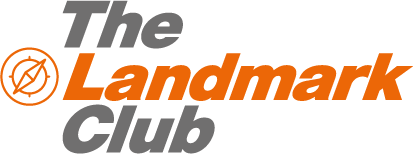
Google Ads Explained (Part 2)
Google Ads terms explained…
Here’s a short glossary of 25 Google AdWords terms you need to know, to get you started and increase your conversion rates with your Google Ad campaigns.
‘Setting up your campaign’ Terms:
1. Campaign – An ad campaign on Google AdWords is made up of your ad groups, and has the same budget, campaign type and your other ad settings. It’s generally what you first set-up when you advertise, and it helps you organize your different paid advertising efforts. You can run multiple campaigns at any time from your Google account.
2. Ad groups – An ad group is your set of keywords, budgets and targeting methods for a particular objective, within the same campaign. For example, if you are running an ad campaign for a shoe sale, you could set up ad groups to target for online sales, women’s shoes and men’s shoes. You can have multiple ads in each ad group.
3. Campaign Type – Your campaign type is where you want your ads to be seen. Google has:
- “Search Network only” (which means Google search only)
- “Display Network only” (which means your ad shows up in Google’s Display network of websites, videos, YouTube, Blogger and more. This is also known as AdSense)
- “Search Network with Display Select” (which is a combo of search and display)
Note: If you have a Google Merchant Center account and want to use Product Listing Ads, you can also choose “Shopping” as a campaign type.
4. Keywords – Keywords are very important in your Google Ads. They are the words or word phrases you choose for your ads, and will help to determine where and when your ad will appear. When choosing your keywords, think like your customer and what they would be searching for when they want your product, service or offer. Though you can include as many as you like, we suggest a maximum of twenty keywords. Here’s Google’s explanation on how to build the best keyword list
5. Quality Score – A quality score is the measurement from Google based on the relevancy of your ad headline, description, keywords and destination URL to your potential customer seeing your ad. A higher Quality Score can get you better ad placement and lower costs.
6. Impressions – An impression is the measurement of how many times your ad is shown.
7. Ad Rank – Your Ad Rank is the value that’s used to determine where your ad shows up on a page. It’s based on your Quality Score and your bid amount.
8. Mobile ad – Mobile ads are what your mobile searchers see on their devices. Google AdWords has WAP mobile ads and “ads for high-end mobile devices”.
9. Ad extensions – Ad extensions are extra information about your business, such as your local address, phone number, and even coupons or additional websites. They’re what shows up in blue below your ad descriptions.
General Terms:
10. Call to Action (CTA) – A CTA is literally the action you want your searcher to take. Good CTAs in your ads are short, action oriented words such as “Buy”, “Get”, “Act Now”, etc.
11. Click Through Rate (CTR) – Your CTR is an important metric in your account settings. It measures how many people who have seen your ad click through to your link destination.
12. Landing Page – Your landing page is the page on your website to which you’re driving traffic from your ad.
13. Optimization – Optimization in Google AdWords is like optimization elsewhere in marketing. It means making the changes in your ad that get you higher results for your objectives.
14. Split Testing – Split testing includes A/B and multivariate testing. It’s a method of controlled marketing experiments with the goal being to improve your objective results (such as higher CTR’s, increased conversion or even better Ad Ranking).
Cost-related Terms:
15. Bid Strategy – Your bid strategy is basically how you set your bid type to pay for viewer interaction with your ads.
16. Daily budget – Your daily budget is what you’re willing to spend per day per ad. Your daily cost is based on a daily average per month, so don’t be alarmed if yours varies from day to day.
17. CPC – Cost-Per-Click is the most common bid type on Google AdWords. It means you pay every time a person actually clicks on your ad. You set your “maximum CPC” in the bidding process, which means that dollar amount is the most you’ll pay for a click on your ad.
18. PPC – Pay-Per-Click is the same as CPC.
19. CPM – Cost-Per-thousand impressions is a bidding method that bases your costs on how many times your ads are shown (impressions).
20. Billing Threshold – Your billing threshold is the level of spending that triggers a charge to you for the ad costs. It applies to automatic payments, and the threshold level starts at £50. It you reach that within 30 days, you’ll be billed, and your threshold then raises to £100 and so on.
Ad creative Terms:
21. Headline – Your ad headline is the header of your ad copy. It generally shows up in blue when your ad is live.
22. Destination URL – Your destination URL is the landing page your ad is directed to when it’s clicked. Your destination site can be a specific page. You can change it for differing ads within ad groups. Your audience does not see it in the ad.
23. Display URL – Your display URL is what shows up in your ad copy. You can keep this simple and clean to increase your brand recognition, trust, and conversions.
24. Side ad – A side ad is the ad that show up on the right hand side of a search engine results page (SERP).
25. Top ad – A top ad is the ad that shows up in a shaded box above the organic search results.
Note: Your ad will likely show up as both a side ad and a top ad – so write your ad copy to optimize for both.
If you want to know even more terminology, check out Google’s own AdWords Glossary here
Up next in Part 3… Ad Campaign Types: Search, Display, and Video

